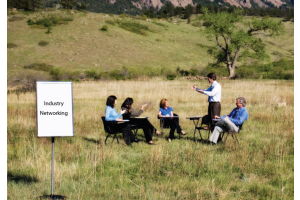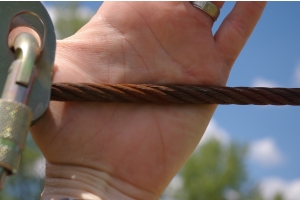Blog
-
April 08, 2020
Inspecting utility poles is an important part of ensuring the safety of challenge course participants. By inspecting utility poles below grade, you can identify potential hazards and take steps to mitigate them.
What to Look For
When inspecting a utility pole below grade, you should look for the following:
- Settlement: Utility poles can settle over time, which can cause them to lean or tilt. If a utility pole is leaning or tilting, it is important to have it repaired or replaced.
- Corrosion: Utility poles are made of wood or concrete, and both materials can corrode over time. If you see any signs of corrosion on a utility pole, it is important to have it repaired or replaced.
- Damage: Utility poles can be damaged by a variety of things, including weather, pests, and accidents. If you see any damage to a utility pole, it is important to have it repaired or replaced.
-
February 14, 2020
Belay devices are essential pieces of equipment for rock climbers, ropes course staff, zip line guides, rappellers, and others who work or recreate in high places. They are used to control the rope and prevent falls while climbing or ascending. There are many different types of belay devices available, each with its own advantages and disadvantages.
- Tubular belay devices are the most common type of belay device. They are simple to use and can be used for a variety of applications. Tubular belay devices work by creating friction on the rope as it passes through the device. This friction helps to control the rope and prevent falls.
- Assisted braking belay devices are a type of belay device that helps to reduce the risk of a fall. Assisted braking devices have a mechanism that automatically locks the rope in place if a fall occurs. This can help to prevent serious injury or death.
- Figure-8 descenders are a
-
November 17, 2019
A rope ascender is a mechanical device that allows you to move up a rope. It is a vital piece of equipment for rock climbers, tree climbers, arborists, ropes course installers, challemnge course technitians, zip line inspectors and other workers who need to ascend ropes for fun or for work.
There are many different types of rope ascenders available, so it is important to choose one that is right for your needs. Some factors to consider when selecting an ascender include:
- The type of rope you will be using. Ascenders are designed to work with specific types of ropes. Make sure to choose an ascender that is compatible with the type and size of rope you will be using.
- The weight capacity of the ascender. Ascenders have different weight capacities, so make sure to choose one that can support your weight and teh weight of any materials and tools connecteed to you or the ascender.
- The type of locking mechanism. Ascenders have different types of
-
September 11, 2019
A ropes course and/or zip line harness is one of the most important pieces of gear for an oporator to purchase. It is essential for your staff and participant safety when on a challenge course or zipline, and it can make a big difference intheir comfortand teh overall expericece. There are many different factors to consider when choosing a harness, so it is important to do your research and find the one that is right for you.
Style
Ropes course and zip line harnesses come in a variety of styles: Sit harnesses, sit harnesses with chest harnesses, full body harenesses and specialty harnesses for accessability or being suspended in a prone or superman position. Its imprtant to select a harness that prevents inversion whil eengaging in the activity. While ist common to wear sit harnesses while rock climbing and on some challneg course elements, best practice would be to use a sit harness with a chest harness or better yeat a full body harness.
Materials
-
May 22, 2019
Challenge courses are a great way for people of all ages to get exercise, learn new skills, and have fun. However, they can also be dangerous if not properly supervised. That's why it's important to use the right safety equipment, including a continuous belay system or smart belay system.
A continuous belay system is a type of belay system that uses a segmented or continuous belay cable or track that a lanyard or trolley connects to once without transferring. A lanyard is connected to the belay cable or track with a hook or trolley that can only come on and off at the start and end of the course or with a special tool used by staff or monitors. The lanyard is then attached to the participant’s harness. A continuous belay system prevents users from becoming unclipped while in the air on the ropes course.
A smart belay system is a type of modern lanyard system that uses








